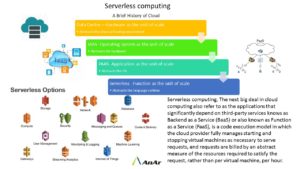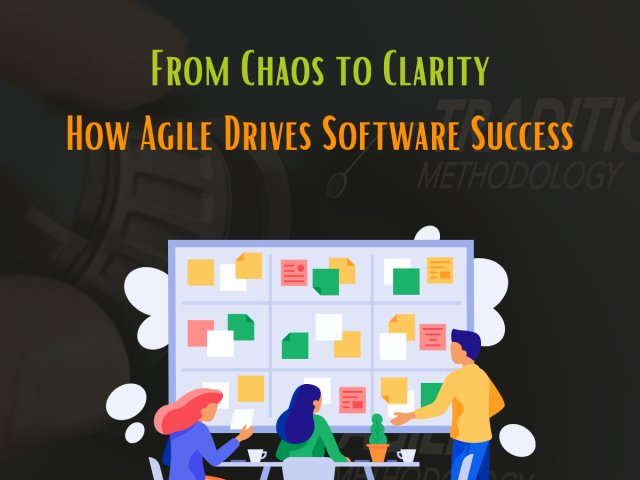Serverless computing, the next big deal in cloud computing also refer to as the applications that significantly depend on third-party services knows as Backend as a Service (BaaS) or also known as Function as a Service (FaaS), is a code execution model in which the cloud provider fully manages starting and stopping virtual machines as necessary to serve requests, and requests are billed by an abstract measure of the resources required to satisfy the request, rather than per virtual machine, per hour.
Serverless computing is when the server is hidden from the developers. The developers do not have to maintain the operation of these serverless. The developers do not have to think about the scalability, high-availability, infrastructure-security, and so on. There is no time required for spending on serverless computing. Hence, this time can be utilised for some other professional work.
Serverless computing is for developing micro-service-oriented solutions. According to this method, the complex build, development and deployment are simplified. Deployment is either onsite premises or in the cloud.

Few Insights on Serverless Computing:
- Serverless computing is not any specific technology. It is the concepts that existed earlier. Certain new solutions have materialised such as severless OpenWhisk that is helpful to the developers.
- The serverless architectures depend on third-party services. They are Backend as a Service [BaaS]. Also, on custom code that’s run in ephemeral containers function as a service [FaaS]. The host vendor is AWS Lambda.
- Serverless was originally for applications for 3rd party services like cloud to manage server-side logic. Generally, these are client application having single page web app or mobile apps. Also, there are the cloud databases namely Parse and Firebase. There are the authentication services like Auth0, AWS Cognito, etc. These services are described as Mobile Backend Service.
- Serverless computing allows application developer to program. However, the process is different. There are no traditional architectures. Severless has stateless compute containers that are event-triggered, transient and completely managed by third-party.
There is user interface or UI-driven applications. An ecommerce app is an excellent application of 3-tier client-oriented system with server-side logic. Traditionally, this architecture would look like an implemented Java script on the server side, a HTML with Javascript at the client end. The client may not know authentication, page navigation, searching, and transactions. However, with a Serverless architecture the program would be simplified. There is no architectural migration. The program is in UX structure.
There is an API Gateway for client and server function. Both the Message Broker and the FaaS environment – the two systems are closely tied to each other. Also there is an Ad server that interacts with the clients responds. The FaaS process checks the multiple copies of the function code written by original process.
FaaS is runs at the back end code without managing the server systems or the server applications. Server applications have containers and PaaS (Platform as a Service.) FaaS have significant architectural restrictions because it executes the processing. FaaS has important restrictions are for any given spell of a function. The in-process or host states that one can make available to any following spell. This includes status of RAM, status of local disk. Thus the deployment-unit is not visible but FaaS functions are stateless.




